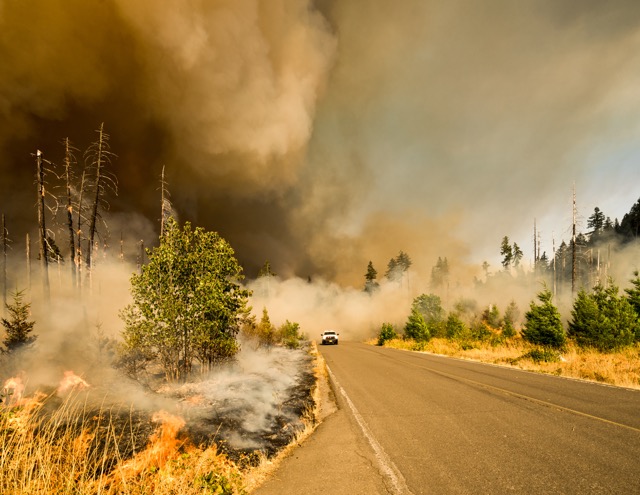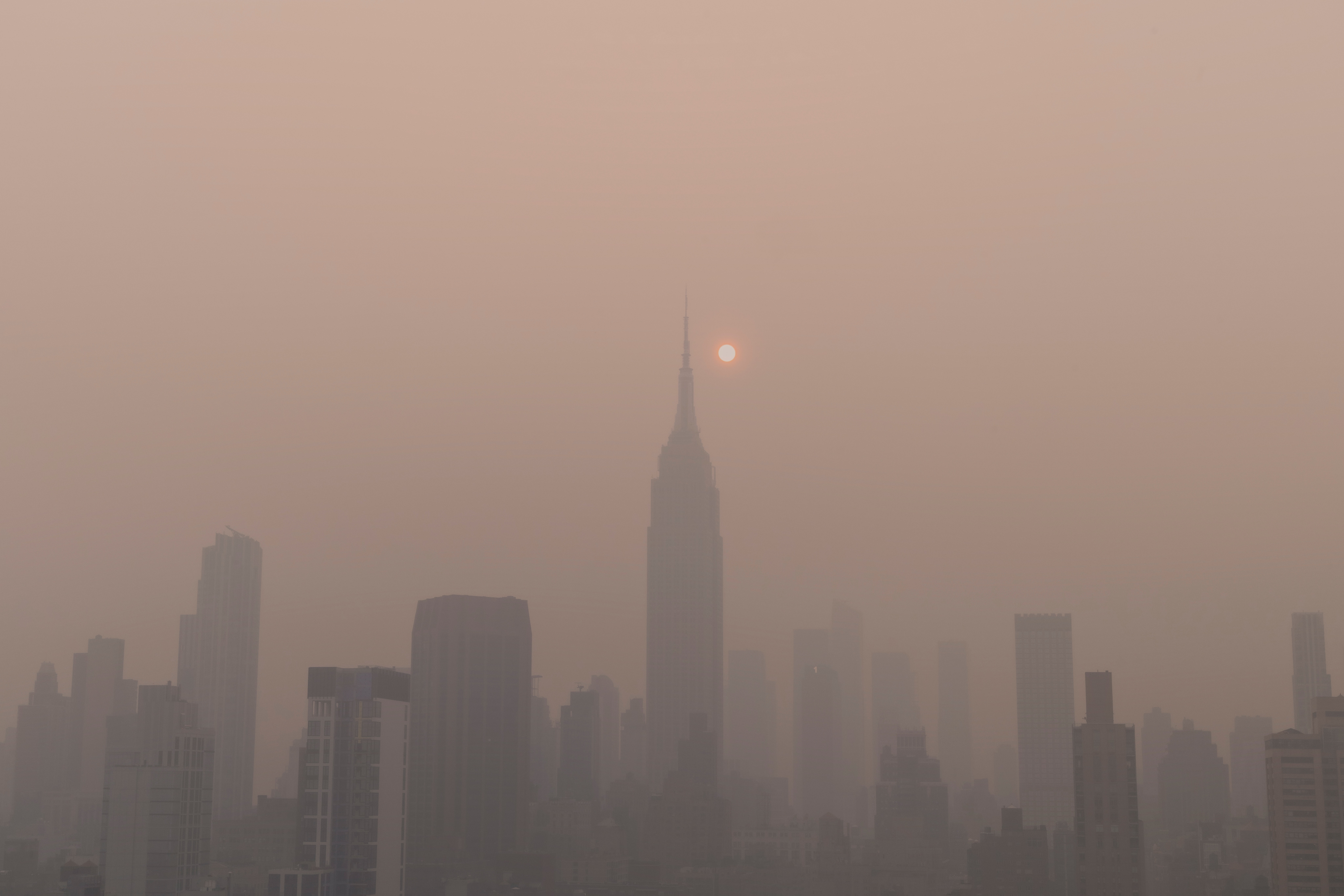The Realities of Climate Change
Smoky air, headaches, and orange hazy skies. In mid-June, there were 450 active fires across Canada, with over 32,000 square acres of land burned in Ontario alone. These wildfires will likely become increasingly common due to climate change impacts, which include severe weather events such as floods, droughts, and extreme heat which are predicted to intensify.
These effects are not equally distributed. For instance, Kiribati and the Marshall Islands are facing a massive threat due to climate change-induced sea level rise. The Global North is responsible for a hundred times more carbon emissions than the Global South, with women, children, Indigenous peoples, and other marginalized groups facing disproportionate impacts and associated human rights concerns.

Climate Change As A Public Health Crisis
The impact that climate change has in creating adverse health outcomes is becoming more and more of a significant concern. By investigating the relationship between climate change and public health, one can better understand how to approach solutions that are equitable and effective.
Understanding the ways in which health intersects with other climate impacts, such as displacement, is key to developing solutions that prioritize the human rights of frontline communities.
Climate change has an impact on health experiences across the globe in many different ways. The detrimental health effects caused by climate change are varied and can be linked to the effect it has on the social determinants of health (SDOH). SDOH are the factors that affect the health experiences and quality of life of a person or community and are split into five groups: Economic Stability, Education Access and Quality, Health Care Access, and Quality, Neighborhood and Built Environment, and Social and Community Context. Using the wildfires this month as an example, key circumstances that shape one’s experience such as their ability to stay indoors and one’s access to necessary healthcare are examples of social determinants of health in play during these wildfires.
Poor air quality is another example, which relates to the Neighborhood and Built Environment, as well as the Social and Community context. This is more likely to impact racial and ethnic minorities as well as those in lower socio-economic groups, increasing their likelihood of adverse health outcomes from exposure to poor air quality and pollution.
The presence of these health disparities can be connected to a variety of structures ranging from racism to class bias. These inequities are built upon historical policies and structures that allow them to persist. For example, instances of redlining (the systematic exclusion of certain communities based on race or ethnicity from mortgages and other financial services) can lead to communities being increasingly exposed to poor-quality air, which can lead to asthma, respiratory-related hospital visits, and premature death due to exposure to harmful particles in the air.
These health issues are often further exacerbated by climate change, which is why many physicians and public health experts advocate for the inclusion of climate change as a part of one of the pillars of the social determinants of health framework.
Climate change contributes to adverse health outcomes and higher healthcare costs that disproportionately affect vulnerable and marginalized communities.
One’s ability to manage the effects of climate change on their health can be linked to their zip code which can determine the severity of weather events that they experience and the level of access to necessary healthcare services.
By using a climate change perspective under the social determinants of health umbrella, one can provide better support and solutions to pressing health experiences. This includes a more holistic understanding of public health concerns ranging from respiratory conditions to mental health conditions including PTSD as a result of, for example, disaster-induced displacement.

The Rise in Displacement Due To Climate Change
In 2021, 59.1 million people were displaced within their country and most of this displacement was linked to climate-related causes. “We lost mosques, a school, shops, farms…Every year the tide rises more and comes in further. Next year this village may not exist,” stressed Mohamed Rashed from the low-lying village of Qumira Char, Bangladesh. Many communities are and will be relocating to avoid climate change risks and threats to livelihood, which can negatively impact health conditions. This can include barriers in accessing healthcare such as financial, linguistic, or cultural barriers which can contribute to negative experiences in accessing care as well as the quality of it.
While many migrate to seek an improved quality of life where they face fewer challenges that climate change creates including drought, food insecurity, and extreme weather patterns, many cannot do the same. The inability to escape the harms that climate change poses can contribute to the continuation of a lack of necessities such as access to fresh water during times of drought.
At this time, there are no specific legal protections under international law that focus on protecting climate-displaced persons. This illustrates the need for a framework that protects the human rights of these populations, which is the impetus for the ICAAD Right to Life with Dignity project.

Moving Forward…
Climate change plays an essential role in health experiences and thus must be seen as a social determinant of health.
It is vital to include climate change as a social determinant of health due to the impact it has and the inequity it exacerbates, leaving marginalized communities having to face a greater burden.
Climate change puts various communities and populations at high risk especially those migrating due to events caused by climate change such as droughts and extreme weather.
Although many are migrating due to this environmental crisis, there still lacks sufficient support for populations at risk.
There must be a push for advocacy including legal and policy protections for those affected by climate change. In addition, there must be aggressive and immediate action to halt climate change while it is still possible to decrease the amount of harm it poses. Lastly, these interventions must center around protecting health, well-being, and the right to life with dignity.
